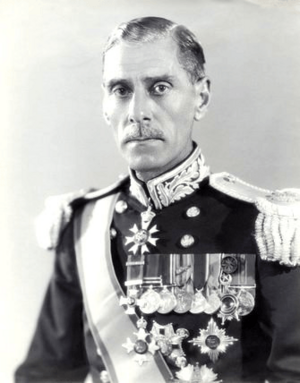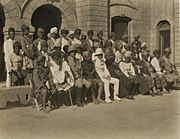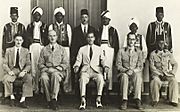Stewart Symes facts for kids
Quick facts for kids
Sir George Stewart Symes
|
|
|---|---|

Stewart Symes by Bassano. 12 July 1938
|
|
| Resident at Aden | |
| In office 1928–1931 |
|
| Preceded by | John Henry Keith Stewart |
| Succeeded by | Bernard Rawdon Reilly |
| Governor of Tanganyika | |
| In office 1931–1934 |
|
| Preceded by | Donald Charles Cameron |
| Succeeded by | Harold MacMichael |
| Governor-General of Sudan | |
| In office 10 January 1934 – 19 October 1940 |
|
| Preceded by | John Maffey |
| Succeeded by | Hubert Huddleston |
| Personal details | |
| Born | 29 July 1882 Wateringbury, Kent |
| Died | 5 December 1962 (aged 80) Folkestone, Kent |
| Military service | |
| Rank | Lieutenant Colonel |
Sir George Stewart Symes was a British Army officer and a colonial governor. He was born on July 29, 1882, and passed away on December 5, 1962. He held important leadership roles in different parts of the world.
Contents
Who Was Sir George Symes?
Sir George Stewart Symes was an important figure in the British Empire. He served in the army and later became a governor. This meant he was in charge of countries that were part of the British Empire. He was known for his fair leadership.
Early Life and Army Days
George Stewart Symes was born in Kent, England. His father was also a soldier, a Lieutenant Colonel. In August 1900, George joined the army. He became a second lieutenant.
He served in South Africa during the end of the Second Boer War in 1902. He was promoted to lieutenant. He took part in a battle called Rooiwal. Later, he was stationed in a peaceful town called Hermanus.
In 1903–1904, he served in the Aden Hinterland. This area is now part of Yemen. He was recognized for his service there. He received a special award called the Distinguished Service Order (DSO).
Leading in Different Lands
After his army service, Symes took on important government jobs. He worked in various British-controlled territories.
- From 1920 to 1925, he was Governor of the North District in Palestine.
- From 1925 to 1928, he was the Chief Secretary for the Government of Palestine.
- From 1928 to 1931, he was the Resident at Aden. This was a top leadership role.
- From 1931 to 1934, he served as Governor of Tanganyika. This country is now Tanzania.
- From 1934 to 1940, he was the Governor-General of the Anglo-Egyptian Sudan.
Helping People in Tanganyika
During his time as Governor of Tanganyika, Symes became very popular. He was known for helping the local African people. Some European settlers did not like this. They thought he favored Africans too much. He was called one of the most "pro-African" governors.
He always chose to support the African people. This was true even when there were disagreements with European settlers. He even sent some European settlers away. This happened if they treated Africans badly.
Symes also brought back British administrators. These administrators had learned local languages. He sent them to areas where those languages were spoken. He also used government money for important projects. These included cleaning water, teaching people to read, and giving out medicines.
Supporting Independence
Symes believed in giving local people a voice. He encouraged them to vote on issues that affected their lives. He also made sure that Africans were paid the same as Europeans and Indians for the same work.
Years later, in the 1950s, he was asked about African independence. He said he supported countries becoming independent. This showed his continued belief in self-governance for African nations.



